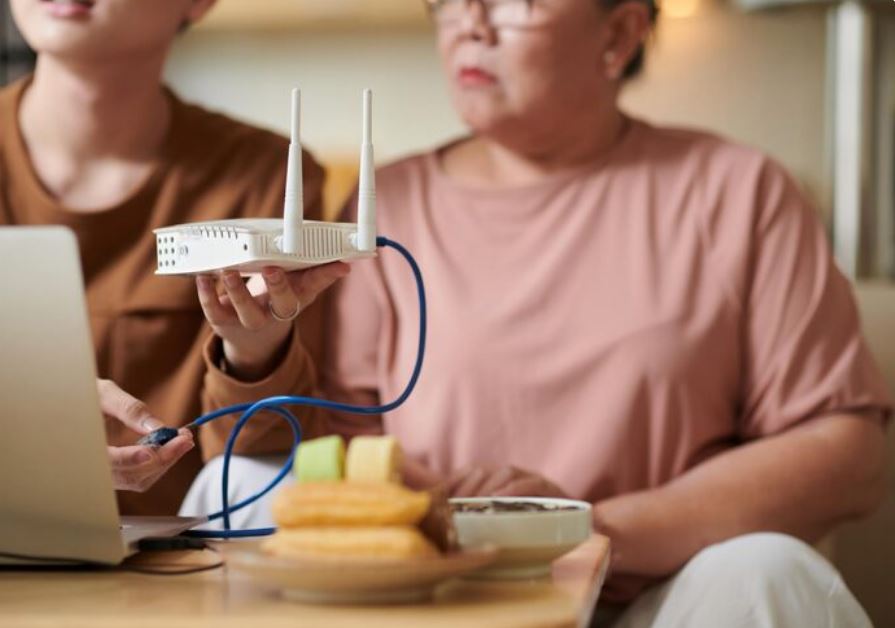
Numerous families nationwide are still connected to antiquated copper lines—not out of obstinacy, but out of necessity. Although fiber optics and cellular networks have advanced quickly, many communities still rely on a system that was groundbreaking a century ago. Deep social and economic disparities that cannot be eliminated by technology alone are revealed by the persistence of copper lines.
Geographical considerations make this dependence especially understandable for many families. Fiber installation is practically impossible in rural and mountainous areas due to financial and physical obstacles. These initiatives are frequently judged economically unfeasible by telecom companies, leaving smaller populations without a contemporary substitute. For instance, a rancher in rural Montana may reside just outside of fiber or 5G coverage, meaning that copper is his only means of dependable communication.
| Category | Details |
|---|---|
| Technology | Copper-based Plain Old Telephone Service (POTS) |
| Primary Users | Rural households, low-income families, aging communities |
| Key Reasons for Dependence | Lack of fiber access, high upgrade costs, essential legacy systems |
| Common Services Still Using Copper | Landline phones, alarms, medical devices, elevator communication |
| Estimated Households Still Using Copper | Around 15 million across the United States |
| Major Telecoms Phasing Out Copper | AT&T, Verizon, CenturyLink |
| FCC Policy Update | 2019 deregulation allowed copper retirement |
| Average Cost of Legacy Line Maintenance | $50–$100 monthly, rising each year |
| Infrastructure Challenges | Remote areas, outdated grids, limited provider investment |
Telecom behemoths were released from the responsibility of maintaining these aging networks by the Federal Communications Commission‘s 2019 ruling, which permitted them to retire copper systems. This policy unintentionally widened a silent divide even though its goal was to speed up digital advancement. Many small businesses, elderly people, and rural households were left behind because they couldn’t afford to upgrade or didn’t want to take the chance of losing vital connectivity.
Some people believe that the problem is more financial than technical. Depending on the location of the house and the wiring requirements, installing fiber or digital infrastructure can cost anywhere from a few hundred to several thousand dollars. For families with limited resources, this expense is extremely prohibitive. Even though they are slow, copper lines are already in place and functional. Paying more for less is the conundrum; as telecoms encourage users to adopt newer technologies, copper service fees have increased.
The situation is a little different in suburban areas. Copper-dependent families frequently do so out of habit and confidence. Many senior citizens have a strong bond with their landlines and consider them to be incredibly dependable lifelines, particularly in times of emergency or power outage. Copper lines are especially resilient in the event of a disaster because they are not dependent on broadband or electricity like VoIP or cellular networks are. For them, copper is safe and not out of date.
The safety and medical systems are also affected by this reliance. Copper-based connections are frequently found in devices such as elevator emergency phones, fire alarms, and medical alert bracelets. These systems are still used by hospitals, assisted living facilities, and even small retail establishments. Immediate change is discouraged by the expense and risk of updating such important tools. Healthcare providers caution that a sudden shift could disconnect vulnerable populations, despite AT&T and other companies’ announcements that they intend to decommission half of their copper networks by 2025.
Although fiber is hailed by tech enthusiasts as being much faster and more efficient, the truth is more complex. It is easy and profitable to install fiber in urban areas. However, it is very challenging to run new lines through rocky terrain or towns with few residents. Progress is slowed down by the terrain, regulatory red tape, and low return on investment. The disparity in digital access between urban centers and rural areas is further exacerbated by this uneven rollout.
Telecommunications firms contend that 5G and fiber-powered, extremely efficient systems are the way of the future. Fiber enables almost instantaneous data transmission by using light signals rather than electrical currents. It has an incredibly long lifespan and requires less maintenance. Millions of families, however, are still excluded from this advancement in spite of these advantages. The infrastructure that would link them is either unaffordable or years away.
Emotional and cultural factors also come into play. For older generations, the copper line is a thread of continuity rather than just a wire. Some families value the comfort and dependability that come with the familiar hum of a landline dial tone. In the rapidly evolving digital world, copper lines evoke a sense of stability, much like handwritten letters or vinyl records. Even though it isn’t realistic, that sentiment has real emotional weight.
Communication technology is not the only area where this phenomenon occurs. It is similar to how many communities still use antiquated water pipes or analog meters—not because they are ignorant, but rather because not all homes are equally impacted by modernization. In this way, the copper line stands for something more significant: an obvious representation of unequal advancement.
Analysts in the industry point out that complete copper replacement would necessitate extraordinarily high levels of coordination between local governments, telecom providers, and regulators. Permits, labor shortages, or logistical obstacles cause delays in projects even when grants are given for broadband expansion. Despite its optimistic announcement, the Rural Digital Opportunity Fund has had little immediate impact in many of the areas it was intended to change.
It’s interesting to note that copper is still indirectly used in some contemporary systems. Copper is still used in electrical grids, telecommunications backbones, and some power transmission networks because of its exceptional durability and conductivity. Although it is being replaced in consumer networks, it continues to be silently essential in the background—a reminder that advancement frequently builds on rather than erases the past.
The copper line continues to be the main source of information, loved ones, and emergency services for millions of households, particularly in remote areas. Although it lacks glitz, it is surprisingly dependable, even in the event of fiber node failure or storms that disrupt cellular networks. For many people, the simple wire that runs across telephone poles is their only link to the modern world.
Nonetheless, there is still hope for the slow shift. Digital infrastructure is growing more quickly than ever before thanks to constant innovation and investment. Accessibility in rural areas is being significantly improved by public-private partnerships, and some communities are experimenting with hybrid models, which keep copper for emergency systems while switching to fiber for home internet. These innovative methods demonstrate how adaptable technology can be when it is motivated by human needs rather than business deadlines.
In the end, the continued use of copper lines is a reflection of society’s uneven progress rather than merely a tale of antiquated technology. Both the challenge and the promise of modernization are embodied by families that continue to rely on them. Their tenacity serves as a reminder that everyone, not just those with money, should benefit from technology. Furthermore, their voices—sent over those antiquated copper wires—deserve to be heard as clearly as those sent through glass as we progress toward a more interconnected future.
